Steph Skardal is a modern-day renaissance woman. While she is a mom of three girls (ages 5, 3, and almost-1), she is also a part-time software engineer, a photographer, and of course, an award winning quilter. Her quilt Going Up was the winner of this year’s Best in Show at QuiltCon 2018, and her work has been featured in Curated Quilts, QuiltCon Magazine, and the MQG’s new book Modern Quilts: Designs of the New Century. Steph is constantly innovating new ways to blend her technological background with her craft. Similar to Libs Elliott, she has written her own code to create quilt designs. Steph is currently experimenting with a tool to help users place color within existing quilt patterns. The tool would enable users to visualize their final color choices before cutting into any fabric – visit it here. And for those looking to learn digital design, Steph shares tutorials on her website demonstrating how to use Photoshop to design quilts. She lives with her husband, three daughters, and five sewing machines in Winston-Salem, North Carolina. Welcome, Steph!
How would you describe your quilting style/aesthetic?
Steph: Contemporary, geometric, graphic, op-art inspired.
How would you describe the creative environment in your home as a child?
Steph: My environment was as creative as much as the next person. I did well in sewing in home economics in 7th grade (but not cooking!), but after that point, I remember athletics and academics being encouraged relative to creative pursuits.
That being said, I’ve been exposed to sewing and making for all of my life. My mother sewed for my sisters and me when we were younger, and the most epic thing I remember her making was Three Amigos costumes for us with amazing embroidery detail. Recently, my mother received a new sewing machine for Christmas and tells me I can teach her how to quilt.
Also, my maternal grandmother sewed and worked as a tailor to pay for nursing school. She sewed clothes for her 7 children, made quilts and ornaments for her grandchildren, and she volunteered for local craft bazaars at a nursing home. My mom says that my great grandmother made “a million” quilts, but unfortunately many of those family heirlooms were given up by someone who may not have realized how much work went into them.
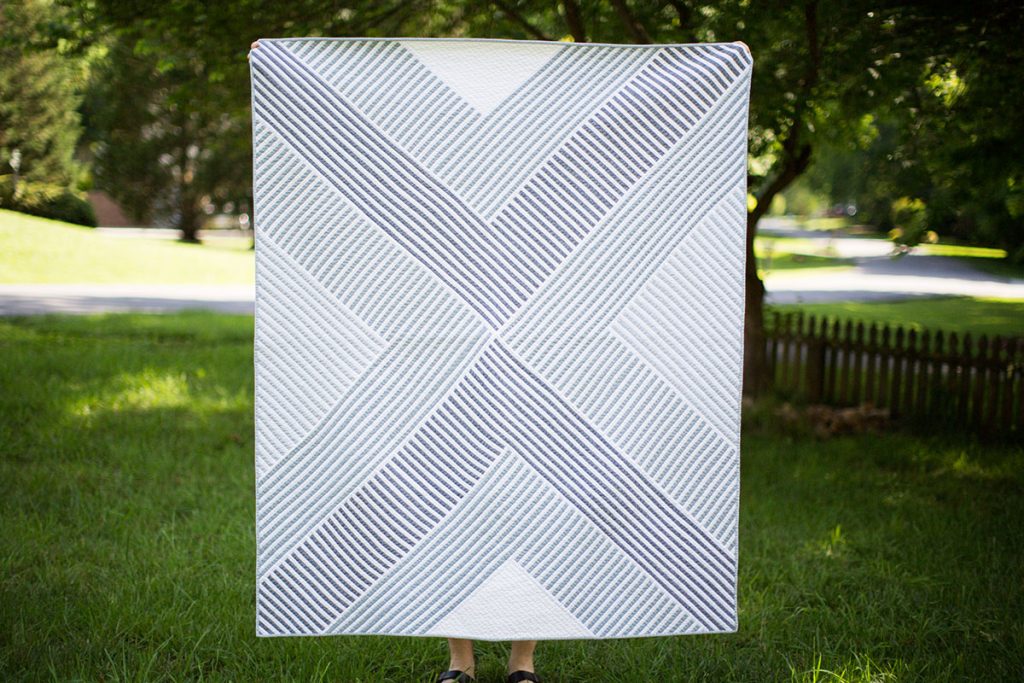
Serenity. Image Courtesy of Steph Skardal.
What artists and makers do you most admire or have an influence on your work?
Steph: Lisa Congdon, for her art, stories, and relatability. Jane Denton, for stylistic similarities and precision. I’ve followed Emily Jeffords for a while, and I love her work. I also follow Pamela Wiley, Lindsay Stead and Meg Callahan with admiration. I really enjoy The Jealous Curator, a blog with some strangely amazing artwork!
Do you consider yourself a “quilter”, an artist, or some combination of both?
Steph: I really don’t use the “A” word when I describe what I do to others. Usually, I tell them that I make quilts. The word “maker” or “quilter” resonates with me more than “artist”. I asked my husband what he thinks, and he suggested “quilt engineer”, so I think I’ll adopt that term moving forward, since much of quilt making involves reverse engineering from textile-driven designs.
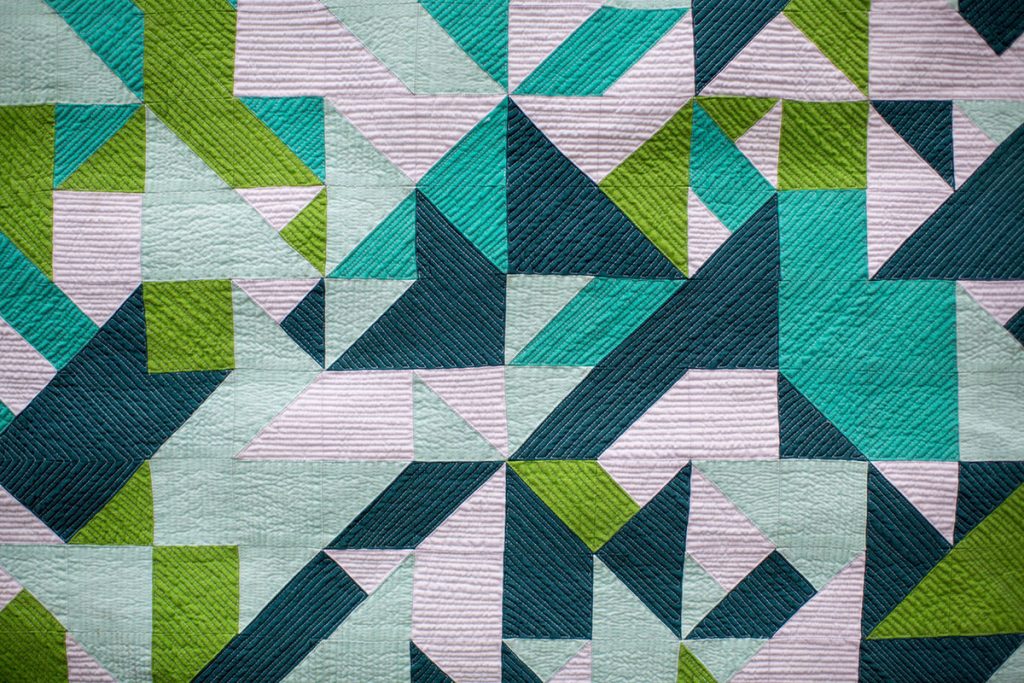
Untitled. Quilt made using Steph’s own code to generate the design. Image courtesy of Steph Skardal.
How would you define “making with intention”?
Steph: In photography, they say the best photos are those that accurately communicate the photographer’s intent; i.e., that the photographer clearly communicated his or her message with minimal distraction and good technical execution.
For me, this photography notion translates well to my design aesthetic in quilting. Making with intention is previsualizing (also a photography idea) the quilt I’m going to make, bringing it to life in Photoshop, reverse engineering how to make it, and executing well on that plan.
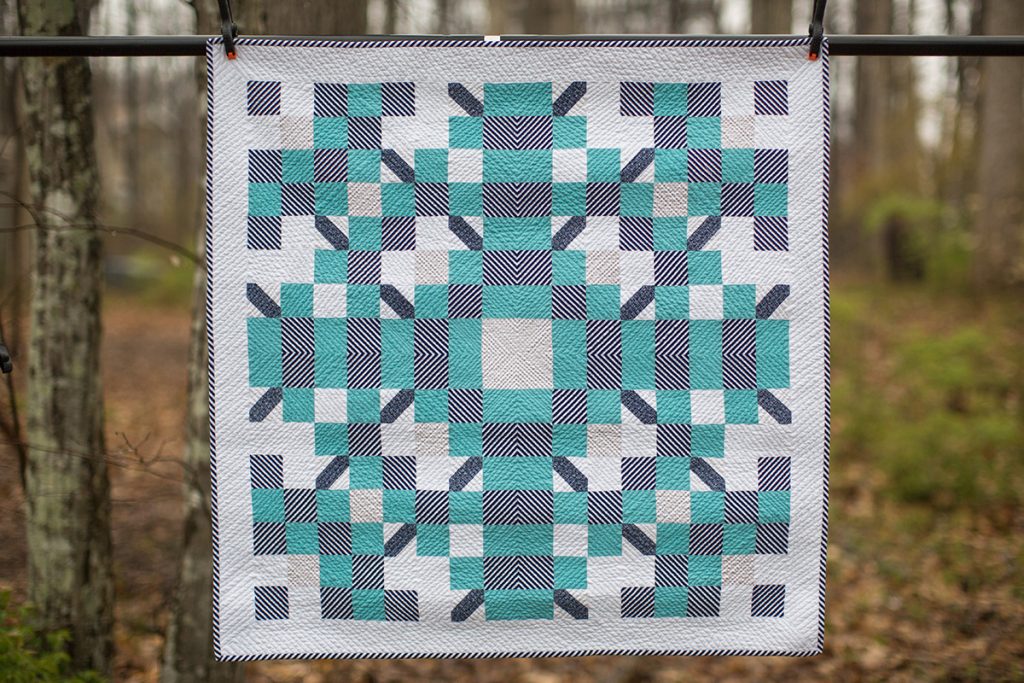
Disco Ball. Made for the Modern Quilt Guild Riley Blake Fabric Challenge 2018. Image courtesy of Steph Skardal.
Do you think that having a craft makes us more compassionate? If so, then how?
Steph: I looked up the word “craft” in the dictionary. It says “an activity involving skill in making things by hand”. I don’t think the act of working with my hands to create something makes me more compassionate, but I think the opportunity to connect over that craft builds compassion.
I recently went to a La Passacaglia open house with a mix of self-proclaimed modern and traditional quilters, and I really loved connecting over shared emotions by the makers who brought the works in progress and finished quilts. One quilter had created a La Pass quilt with her own quilt leftovers from many years. She was clearly connected to the memories from each of those finished quilts, and her friends remembered the time when she was working on those quilts. Another quilter was just over all the hand piecing and ready to see it finished to display above her mantle at about a quarter of the finished size. So, while I may not connect over the design aesthetic with others, I relate to these human feelings of sentimentality, readiness to be done, and pride in craftsmanship.
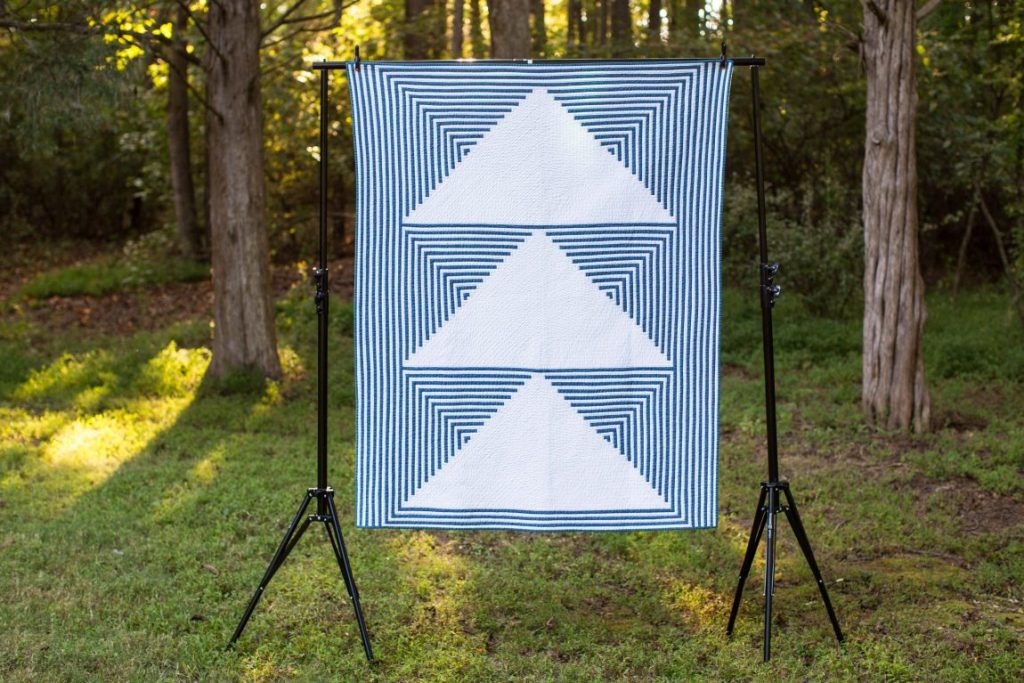
Going Up, which won Best In Show at QuiltCon 2018. Image courtesy of Steph Skardal.
Are there any rituals that you perform to prepare/ground yourself in your work?
Steph: I wouldn’t call it a ritual, but I enjoy listening to podcasts when I work with my hands. Listening to podcasts is my ritual for keeping up with what’s going on in the world and/or be entertained. My wireless headphones have become a staple tool!
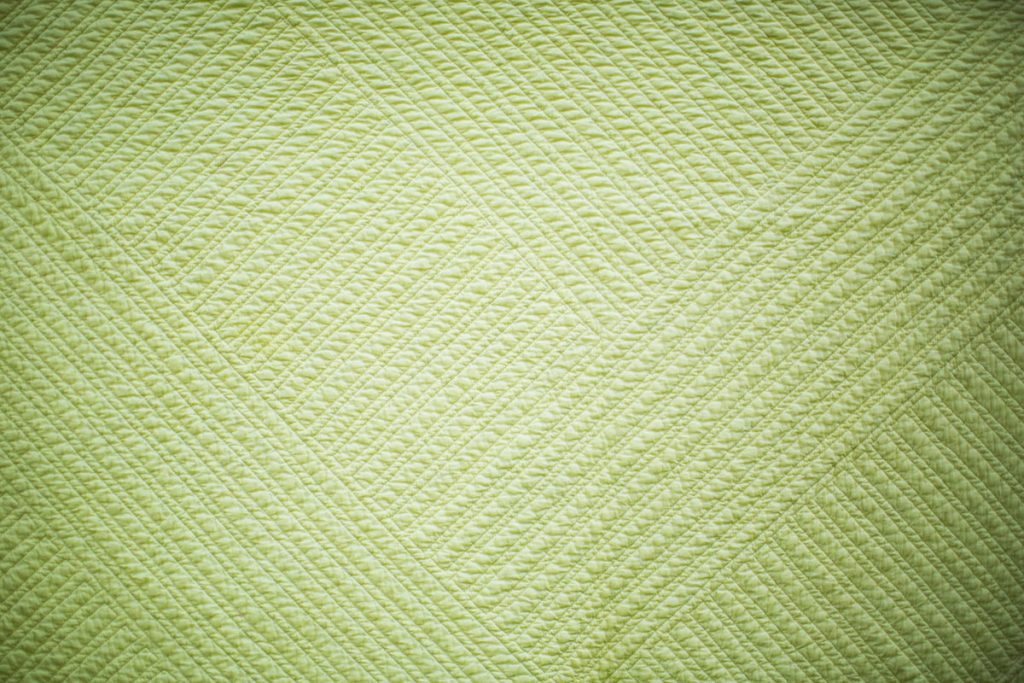
Serenity (back). Image courtesy of Steph Skardal.
What is the support system you have in place for creating your work?
Steph: I wouldn’t have time to make without the support of my husband, employers, and flexible daycare providers, which enable me to dedicate time daily to creative pursuits. I’m lucky to have a strong professional foundation to be in a position where I can choose to work half-time and others support me in that choice.
In terms of improving my sewing skills, I attend a monthly open sew with five other women and our extremely knowledgeable teacher (also referred to as our “den mom”). We bring projects of our own choosing (sewing, embroidery, hand stitching, piecing and quilting) and are often asking each other for opinions and/or technical direction. We all have very different style, but there is an appreciation in that. And we’ve come to support each other on a personal level.
I also have found friends and support over social media, which has become more meaningful when I’ve been able to meet those people in real life.
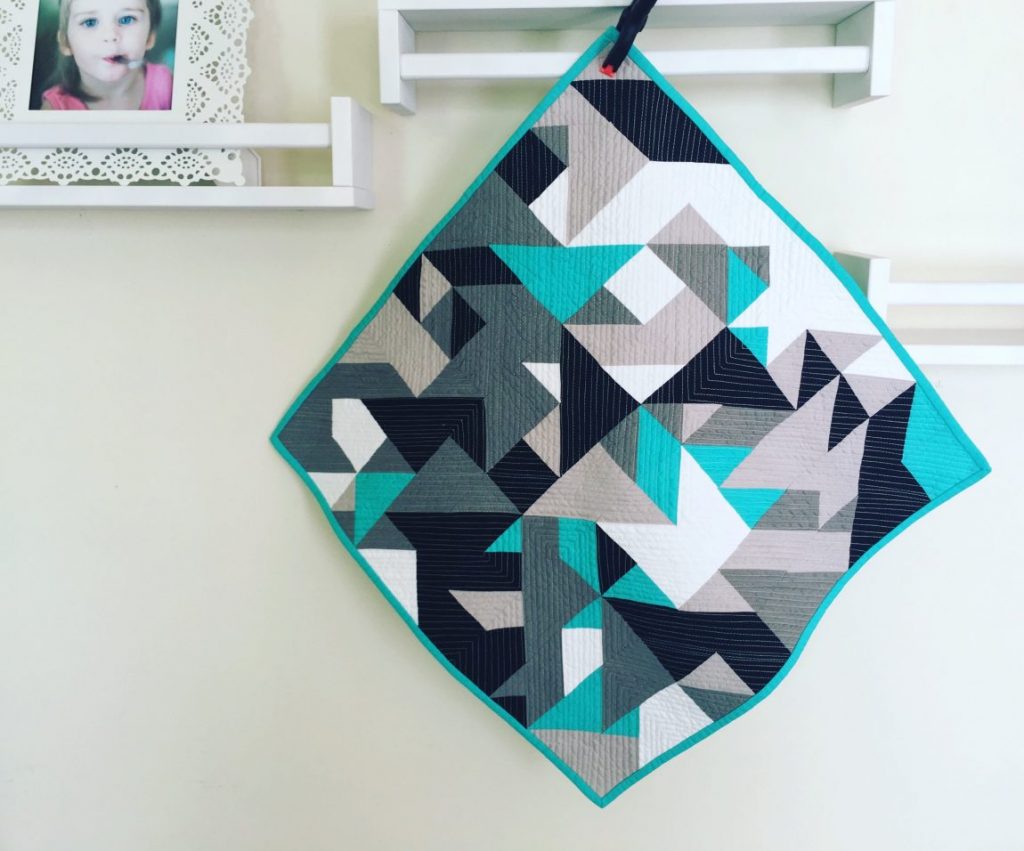
An untitled mini quilt that Steph made as part of a Libs Elliot mini quilt swap, using her own code as the basis of the design.
How do you deal with comparison to / envy of others? Can you describe a time when you used comparison/envy/admiration to push yourself in your own work and self-discovery?
Steph: My mantra, heard once in a spinning class, is “your mountain, not mine”, so I try not to compare someone’s own progression in quilting to mine as long as I’m enjoying my own process.
From a technique perspective, I try to deliberately practice to improve. From a design perspective, I look at others’ work and ask myself what I like or what I don’t like about their work and how I might be able to apply or adapt those things that I like to my own style, and what often comes out of this is entirely unique ideas. Lately, I’ve enjoyed participating in swaps and challenges to force myself to work with external design contraints.
What was the most challenging thing you ever made?
Steph: One of the first quilts I made was challenging because I hadn’t built up the endurance in patience. After I made that quilt, I said I’d never make another quilt. I’ve sewn a lot of apparel that is fairly technical and I find much of it challenging.
Other things I find challenging are hand quilting, bias strip applique, sewing hems on knit fabric, and knitting (I’ve learned and unlearned a few times). But, with the right amount of motivation, deliberate practice and support, I mostly believe that anyone can do what they want to. So motivation might be the only thing stopping me on the aforementioned skills. :)
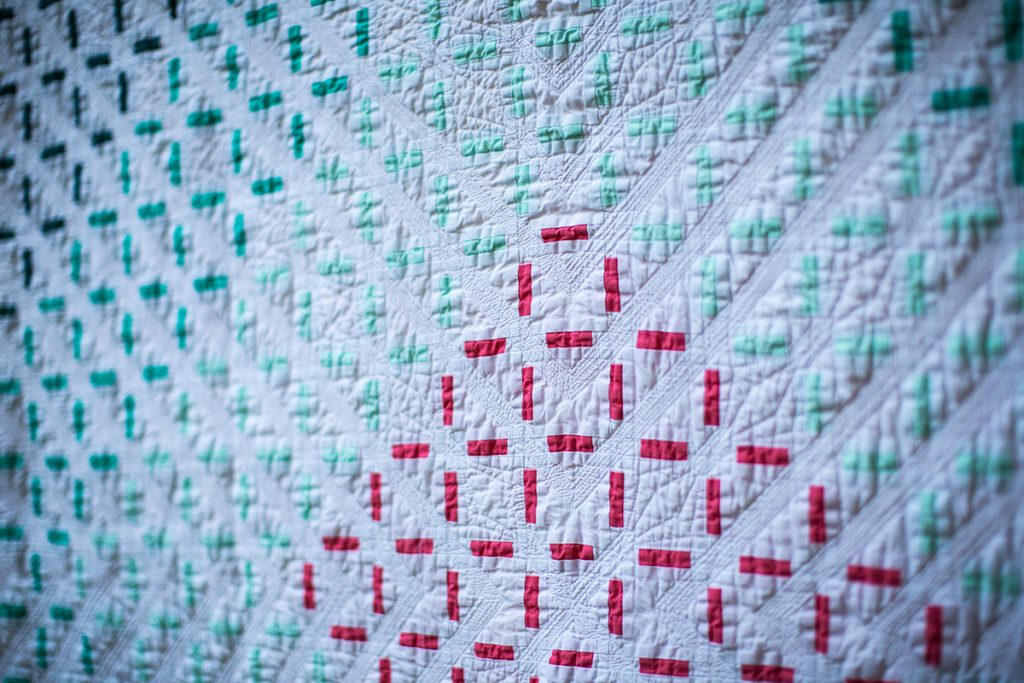
Untitled. Image courtesy of Steph Skardal.
What does it mean to you to work in a traditionally domestic medium that historically has been regarded as predominately female (aka “women’s work”)?
Steph: I’ll just say at this point in my life, I feel privileged to have a support system that enables me to pursue quilting as a creative hobby that doesn’t have to support me financially. I’m fortunate enough to have a professional career that allows me to work with a flexible schedule (and remotely), and I’m lucky I can fill my limited free time with things that I enjoy.
What’s more interesting here to me is that my professional career is in a field that is predominately male (software engineering). The topic of gender stereotypes comes up occasionally, and I’m on the other side of the percentages in that space. I think I’m lucky that I was raised with the confidence and the opportunity to pursue a variety of interests regardless of gender stereotypes, and the support to continue those activities as an adult. I hope the same applies to my children.
Thank you, Steph! It has been such an exciting few months for you! We can’t wait to see what you are up to next! To learn more about Steph, visit her website Steph Skardal Quilts. You can also find Steph on Instagram and on Pinterest.
Would you like to be featured in The Creativity Project? I’d love to hear from you. Want to participate, but not necessarily be featured? You can do that! Click here to take the survey!
The Creativity Project can be found on Instagram, Pinterest, Twitter or Bloglovin’. Or sign up for my newsletter The Monthly Muse to have the Creativity Project delivered right to your inbox.
SaveSave
10 Comments
Comments are closed.

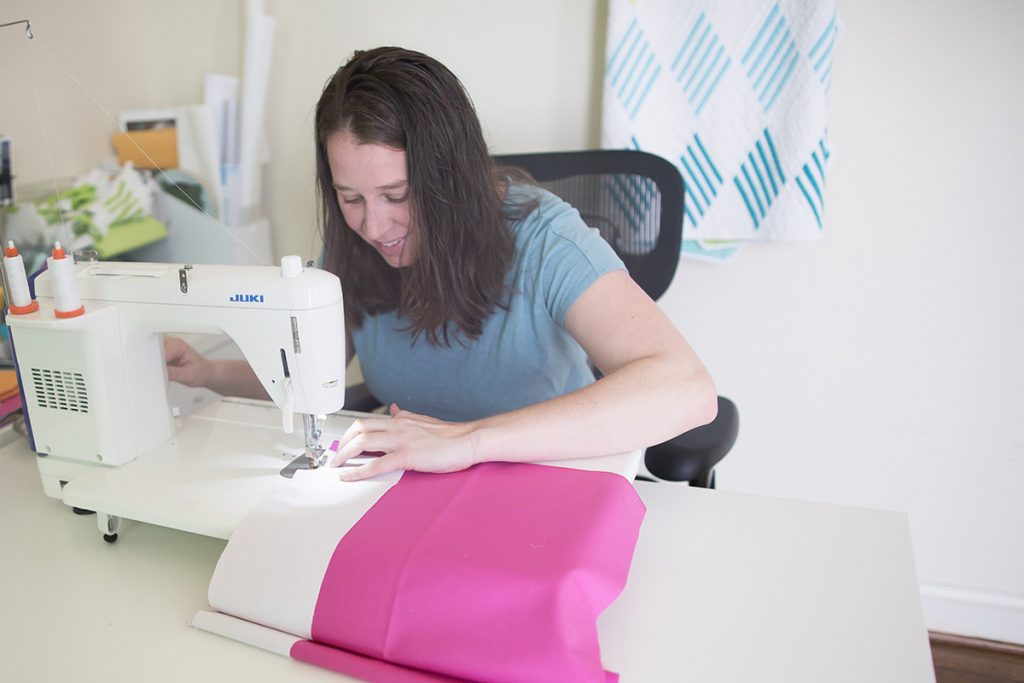
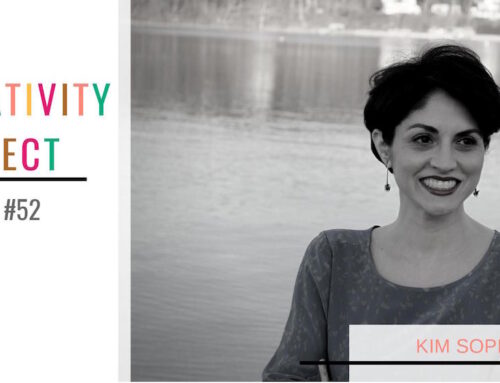
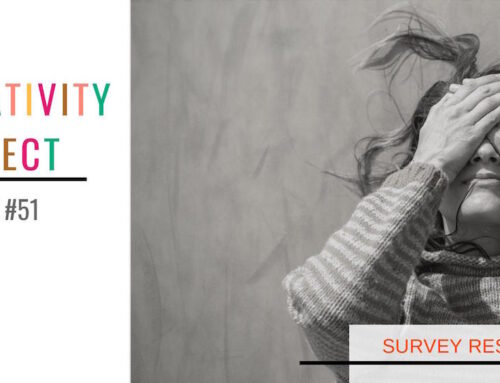
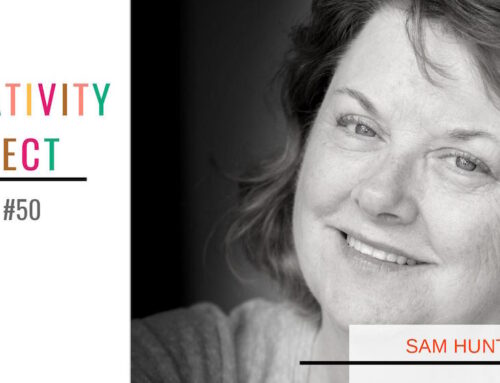
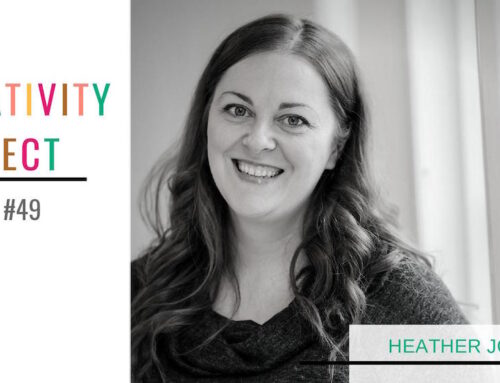
I love Steph’s style! Congrats on the Quiltcon win, a wonderful achievement. I so love the Serenity quilt shown here. It really is serene to look at, but we know how much effort would have gone into all that detailed piecing!
Yes! It’s so crisp and clean, but manages to appear simple. Totally agree, Kirsty!
I think the term “quilt engineer” might resonate with lots of people. Great perspective on balancing a career and hobby with a different gender balance, too.
I thought so, too, Yvonne! I’m always amazed at how many incredible quilters are engineers and architects. It makes sense, but I never realized the cross-over until meeting many makers through instagram. And I agree, it’s interesting to hear Steph’s perspective on working in a male-dominated industry and how she balances that out with quilting. A great read!
Kim – oh my gosh, I love the randomizer tool Steph designed. It is particularly helpful for someone like me, for whom color selection is a challenge. I could play with that for a very long time… well, I may have already and will likely continue to!! Excellent interview and I like Steph’s style – very crisp and clean.
It’s addicting, isn’t it??? It’s just so much fun to have so many color options at your fingertips!
It is interesting to read about her process in creating quilts. Envisioning them and reverse engineering.
Definitely, Lisa! Steph has a really unique perspective, coming from her technology and coding background! I think that’s why her color tool is so appealing to me, because it’s a glimpse into her process, but accessible for a non-techy like myself!
The same thing that Lisa (above) picked up on is what struck a chord with me. I’d have to admit that I find it very difficult to envision a quilt in its entirety before starting it. I would describe my process as more organic–I make some decisions, implement them, make some more decisions. I wonder how I could stretch myself as a maker by committing to more upfront.
I really enjoy Steph’s bold, modern aesthetic and appreciate the technical skill she pores into each project! Thanks for the look into her process!
I think we are seeing more and more that technology is having a huge impact on the modern quilting movement. In fact, Heather Black makes that same point at the end of this week’s interview. Because so many quilters are using tools like EQ and Photoshop to design quilts prior to making them, they are making design decisions and changes without having to “try them out” as we do in a more organic, dare I say traditional? – approach. It’s definitely something to consider, and I, too, am trying to think about designing from the whole-quilt perspective rather than piece by piece. Although I would definitely argue there is value in both processes!